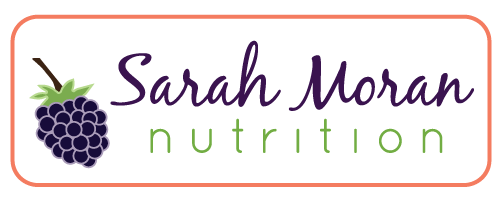 When I say refined grains what I'm really talking about is white flour. When grains are refined, they are stripped of the bran and germ, which contain most of the protein, fatty acids, fiber, iron and B vitamins, and only the starchy endosperm is left behind. This makes refined grains nutritionally inferior to their whole grain counterparts as well as related to type 2 diabetes, heart disease, and obesity. However, avoiding refined grains isn't as easy as it may seem. It comes down to knowing the intricacies of food packing and labels.
First, we need to look at the front of the box where so many seductive claims often reside. Understanding the phrases you see here will keep you from getting sucked in by seemingly healthy terminology.
When I say refined grains what I'm really talking about is white flour. When grains are refined, they are stripped of the bran and germ, which contain most of the protein, fatty acids, fiber, iron and B vitamins, and only the starchy endosperm is left behind. This makes refined grains nutritionally inferior to their whole grain counterparts as well as related to type 2 diabetes, heart disease, and obesity. However, avoiding refined grains isn't as easy as it may seem. It comes down to knowing the intricacies of food packing and labels.
First, we need to look at the front of the box where so many seductive claims often reside. Understanding the phrases you see here will keep you from getting sucked in by seemingly healthy terminology.
Multigrain
This means that several different kinds of grains are present in the product, but it doesn't speak to whether these are whole or refined grains.
Made with Whole Grain
This means just what it says: the product was made with whole grains. However, refined grains are likely included as well. It's like labeling a cookie that has orange zest in the batter "made with oranges."
Whole Grain
This sounds like just what we want, until you find out that in order to be labeled this way a product only needs to be made with 51% whole grains. In my book, that doesn't cut it.
100% Whole Grain
This is exactly what we want. When you see this, all of the grains in the product are whole grains. However, this doesn't get you off the hook from reading the ingredients list.
Now that we understand these front-of-the-box phrases, it's time to move on to the ingredients list on the back. Here is another place they can trip you up. This is what you need to know.
Wheat Flour
Many people think this is whole wheat flour, but it's not. The standard flour we use in cooking is all made from wheat. The only difference is the level of refinement. This is simply white flour in disguise.
Unbleached Wheat Flour
This is the same thing as "wheat flour" except they try to make it sound even better by adding the word "unbleached." While this is better than bleached flour, it's still white flour and that is not what we want.
Enriched Wheat Flour
White flour again, but here they add "enriched" hoping to give an air of health. However, all white flour is enriched by law because of the way refinement removes nearly all of the nutrients. Also, this comes nowhere close to the nutrient content of the original whole grain.
Whole Wheat Flour
Jackpot! When you see this in the ingredients it means that the flour is whole wheat.
So, when you're doing your shopping, look for only whole wheat or whole grain flour in the ingredient list and no white flour. It's also important to note that just because a product has whole grains doesn't make it healthy. For example, many cereals are marketed as having whole grain, but then the second ingredient is sugar. You have to consider the whole product in its entirety to determine whether or not it is a good buy.

 As I've mentioned
As I've mentioned 
 Slipping in more fruits and vegetables at snack time is a great way to up your produce intake. Instead of turning to options like
Slipping in more fruits and vegetables at snack time is a great way to up your produce intake. Instead of turning to options like 
 Moving into our next week of the challenge, our focus will be on increasing the fruits and vegetables in our diets. Improving your diet is so often about what you can't have, but this week is all about adding things in. When you add more produce to your diet, you will increase the water, fiber, vitamin, and mineral content. Also, eating more fruits and veggies can help with weight maintenance and weight loss as it will fill you up and help you feel satisfied, pushing out higher calorie options. This week, we will approach this goal from two different directions: adding more produce dishes to your diet as well as incorporating it into foods you may already enjoy. By doing both of these, it will be that much easier to amp up the amount of fruits and vegetables you eat every day.
If you're not a produce fan, do not fear. Remember that the way you prepare a food can make all a difference. Don't think you like broccoli? Try steaming, sauteing, roasting, serving with a tomato sauce, or blending it into a soup. Also, it can take several exposures before you can really determine if you like a food or not and, because your tastes change as you get older, foods you may have despised as a child might taste delicious to you now. You don't have to like everything, but the more you try and experiment, you might be surprised to discover your new favorite vegetable.
Moving into our next week of the challenge, our focus will be on increasing the fruits and vegetables in our diets. Improving your diet is so often about what you can't have, but this week is all about adding things in. When you add more produce to your diet, you will increase the water, fiber, vitamin, and mineral content. Also, eating more fruits and veggies can help with weight maintenance and weight loss as it will fill you up and help you feel satisfied, pushing out higher calorie options. This week, we will approach this goal from two different directions: adding more produce dishes to your diet as well as incorporating it into foods you may already enjoy. By doing both of these, it will be that much easier to amp up the amount of fruits and vegetables you eat every day.
If you're not a produce fan, do not fear. Remember that the way you prepare a food can make all a difference. Don't think you like broccoli? Try steaming, sauteing, roasting, serving with a tomato sauce, or blending it into a soup. Also, it can take several exposures before you can really determine if you like a food or not and, because your tastes change as you get older, foods you may have despised as a child might taste delicious to you now. You don't have to like everything, but the more you try and experiment, you might be surprised to discover your new favorite vegetable.
 Many people turn to artificial sweeteners as a way to get healthier or lose weight, but I think this is a huge mistake. For one, it goes against my philosophy of eating whole foods as close to their natural state as possible and avoiding chemical, man-made ingredients, fillers, and add-ins. In addition, no matter what you think about the safety of artificial sweeteners, they send the wrong message about the way we should eat. What I mean by that is, when you turn to an artificial sweetener to "save calories" what you're really doing is continuing to operate within the same frame of mind as before, rather than changing it. You're perpetuating a diet that emphasizes sweet. What really needs to happen is to change your diet to contain less sugar and allow your taste buds to adjust. This does take some time (a couple weeks), but the result is a wholesome diet without being tied down by a sugar obsession.
One area I used to be dependent on artificial sweeteners was my yogurt. I always bought the low-calorie, artificially sweetened brands. Giving them up was a struggle because I just didn't see how I could eat yogurt without them. However, once I really got serious and dedicated, I was able to make the switch and I haven't looked back since. Now, I buy bulk tubs of plain yogurt instead. It's much cheaper than individual containers and I can flavor it however I like. Frozen berries and other fruits are a great option, but when I want to make my yogurt my whole breakfast, I use the recipe below.
Many people turn to artificial sweeteners as a way to get healthier or lose weight, but I think this is a huge mistake. For one, it goes against my philosophy of eating whole foods as close to their natural state as possible and avoiding chemical, man-made ingredients, fillers, and add-ins. In addition, no matter what you think about the safety of artificial sweeteners, they send the wrong message about the way we should eat. What I mean by that is, when you turn to an artificial sweetener to "save calories" what you're really doing is continuing to operate within the same frame of mind as before, rather than changing it. You're perpetuating a diet that emphasizes sweet. What really needs to happen is to change your diet to contain less sugar and allow your taste buds to adjust. This does take some time (a couple weeks), but the result is a wholesome diet without being tied down by a sugar obsession.
One area I used to be dependent on artificial sweeteners was my yogurt. I always bought the low-calorie, artificially sweetened brands. Giving them up was a struggle because I just didn't see how I could eat yogurt without them. However, once I really got serious and dedicated, I was able to make the switch and I haven't looked back since. Now, I buy bulk tubs of plain yogurt instead. It's much cheaper than individual containers and I can flavor it however I like. Frozen berries and other fruits are a great option, but when I want to make my yogurt my whole breakfast, I use the recipe below. Quitting soda is one of the quickest ways to improve your diet and your health. First off, they are basically sugar-water with a few chemicals thrown in and have no redeeming qualities at all. Second, your body doesn't register liquid calories as well as food calories, so it's not going to fill you up the way an equivalent amount of food would. Third, they push out other healthful beverages in your diet like water and tea. To add insult to injury, they are most often sweetened with high-fructose corn syrup which is highly processed and made from GMO corn. Also, while diet sodas may be calorie-free, they still are in no way healthy and, in my opinion, are just as dangerous as their full-calorie counterparts. Bottom line: the soda has got to go.
Quitting soda is one of the quickest ways to improve your diet and your health. First off, they are basically sugar-water with a few chemicals thrown in and have no redeeming qualities at all. Second, your body doesn't register liquid calories as well as food calories, so it's not going to fill you up the way an equivalent amount of food would. Third, they push out other healthful beverages in your diet like water and tea. To add insult to injury, they are most often sweetened with high-fructose corn syrup which is highly processed and made from GMO corn. Also, while diet sodas may be calorie-free, they still are in no way healthy and, in my opinion, are just as dangerous as their full-calorie counterparts. Bottom line: the soda has got to go. When I say refined grains what I'm really talking about is white flour. When grains are refined, they are stripped of the bran and germ, which contain most of the protein, fatty acids, fiber, iron and B vitamins, and only the starchy endosperm is left behind. This makes refined grains nutritionally inferior to their whole grain counterparts as well as related to type 2 diabetes, heart disease, and obesity. However, avoiding refined grains isn't as easy as it may seem. It comes down to knowing the intricacies of food packing and labels.
First, we need to look at the front of the box where so many seductive claims often reside. Understanding the phrases you see here will keep you from getting sucked in by seemingly healthy terminology.
When I say refined grains what I'm really talking about is white flour. When grains are refined, they are stripped of the bran and germ, which contain most of the protein, fatty acids, fiber, iron and B vitamins, and only the starchy endosperm is left behind. This makes refined grains nutritionally inferior to their whole grain counterparts as well as related to type 2 diabetes, heart disease, and obesity. However, avoiding refined grains isn't as easy as it may seem. It comes down to knowing the intricacies of food packing and labels.
First, we need to look at the front of the box where so many seductive claims often reside. Understanding the phrases you see here will keep you from getting sucked in by seemingly healthy terminology.
 You've likely heard about the danger of trans fats on the news or seen products that proudly display "0 grams of trans fat per serving" on their packaging. But what are trans fats and how bad are they really? First, we need to start with a little chemistry. Fatty acids can either be saturated or unsaturated. These terms refer to the carbon-hydrogen bonds in the fatty acid chain. When a fatty acid is saturated, each carbon in the chain has the maximum number of bonds (4) while unsaturated means that there are less than 4 bonds, resulting in double bonds. So, saturated fats are holding all of the hydrogen they can and unsaturated fats are not. These differences impact the structure of the fat and, therefore, the way it is processed in the body. Trans fats occur when the hydrogens in an unsaturated fat are across from each other rather than next to each other. While this does occur naturally in minimal amounts, the man-made kinds are the ones that have been found to be harmful. In fact, research published in the New England Journal of Medicine has shown that a 2% increase in calories from trans fat increases your risk of heart disease by 23%!
You've likely heard about the danger of trans fats on the news or seen products that proudly display "0 grams of trans fat per serving" on their packaging. But what are trans fats and how bad are they really? First, we need to start with a little chemistry. Fatty acids can either be saturated or unsaturated. These terms refer to the carbon-hydrogen bonds in the fatty acid chain. When a fatty acid is saturated, each carbon in the chain has the maximum number of bonds (4) while unsaturated means that there are less than 4 bonds, resulting in double bonds. So, saturated fats are holding all of the hydrogen they can and unsaturated fats are not. These differences impact the structure of the fat and, therefore, the way it is processed in the body. Trans fats occur when the hydrogens in an unsaturated fat are across from each other rather than next to each other. While this does occur naturally in minimal amounts, the man-made kinds are the ones that have been found to be harmful. In fact, research published in the New England Journal of Medicine has shown that a 2% increase in calories from trans fat increases your risk of heart disease by 23%!

